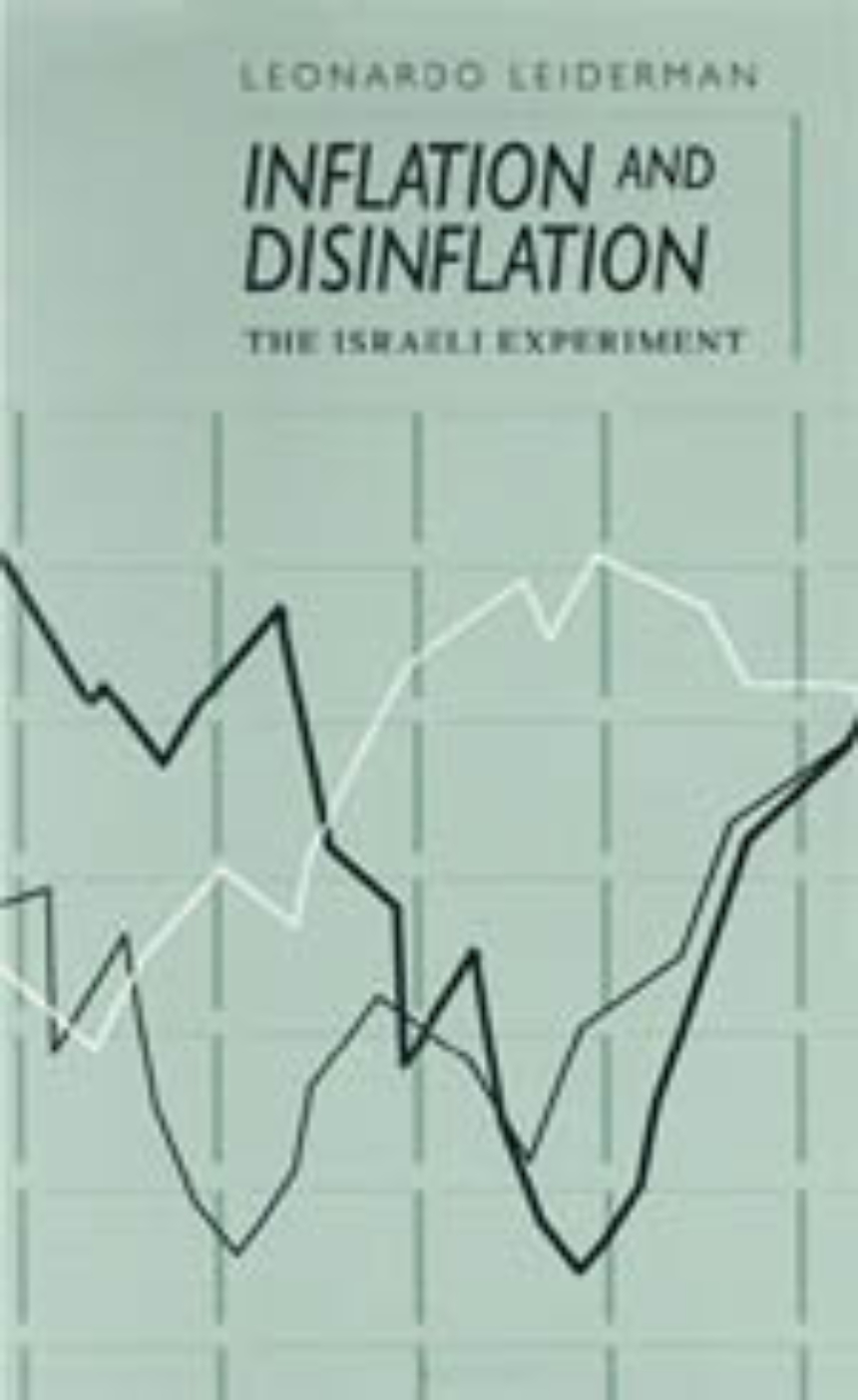Inflation and Disinflation
The Israeli Experiment
During the early 1980s, Israel’s inflation rate rose to almost 500% per year—one of the highest inflation rates in the developed world. In 1985, the Israeli government implemented a program that immediately reduced inflation to 15%-20%, where it remained for the rest of the decade. How did the economy deal with these major changes so rapidly and successfully? In these eighteen articles, Leonardo Leiderman discusses why the Israeli plan worked and considers how other countries might benefit from similar policies.
Even though standard economic models predict that output will drop and unemployment will rise during disinflation, Israel saw a boom in private consumption and large increases in real wages that lasted for about three years. To understand how the effects of Israeli disinflation policies defied typical expectations, Leiderman investigates how monetary fiscal policy determined Israel’s runaway inflation and how the country brought its economy abruptly under control. He finds that rates of inflation and consumption depend on the public’s expectations about future fiscal adjustments and that foreign trade shocks do not inevitably lead to a long-term rise in the inflation rate. His illumination of international trade and domestic policies, past and present, will interest academic economists and policymakers alike.
Even though standard economic models predict that output will drop and unemployment will rise during disinflation, Israel saw a boom in private consumption and large increases in real wages that lasted for about three years. To understand how the effects of Israeli disinflation policies defied typical expectations, Leiderman investigates how monetary fiscal policy determined Israel’s runaway inflation and how the country brought its economy abruptly under control. He finds that rates of inflation and consumption depend on the public’s expectations about future fiscal adjustments and that foreign trade shocks do not inevitably lead to a long-term rise in the inflation rate. His illumination of international trade and domestic policies, past and present, will interest academic economists and policymakers alike.
344 pages | 53 line drawings, 44 tables | 6 x 9 | © 1993
Economics and Business: Economics--International and Comparative
Table of Contents
Preface
Introduction
Part I: Stopping High Inflation
1. Overview: The Main Lessons
2. Stabilization in High-Inflation Countries: Analytical Foundations and Recent Experience
(with Elhanan Helpman)
3. Real Wages, Monetary Accommodation, and Inflation
(with Elhanan Helpman)
4. Comparing Macroeconomic Performance before and after Disinflation in Israel
(with Nissan Liviatan)
Part II: Devaluation, Money, and Inflation: Dynamic Interactions
5. Overview
6. Dynamic Interactions between Inflation and Devaluation in Israel
7. The Interaction between Inflation and Monetary Aggregates in Israel
(with Elise A. Brezis and Rafi Melnick)
8. Slowing Down Devaluation, Monetary Accommodation, and Inflation: A Comparison of Argentina, Chile, and Israel
(with Elhanan Helpman)
9. Foreign Trade Shocks and the Dynamics of High Inflation: Israel, 1978-85
(with Assaf Razin)
Part III: Seigniorage, Money Demand, and Inflation
10. Overview
11. New Estimates of the Demand for Money in Israel
(with Arie Marom)
12. Seigniorage and the Welfare Cost of Inflation: Evidence from an Intertemporal Model of Money and Consumption (with Zvi Eckstein)
13. Optimal Inflation Tax under Precommitment: Theory and Evidence
(with Guillermo A. Calvo)
Part IV: Relative Price Variability
14. Overview
15. Price Controls and the Variability of Relative Prices
(with Alex Cukierman)
16. Relative Price Variability and Inflation in the Israeli Economy
(with Alex Cukierman)
17. Relative Price Variability under High Inflation and Disinflation
Part V: Effects of Government Budget Policies
18. Overview
19. Testing Ricardian Neutrality with an Intertemporal Stochastic Model
(with Assaf Razin)
Index
Introduction
Part I: Stopping High Inflation
1. Overview: The Main Lessons
2. Stabilization in High-Inflation Countries: Analytical Foundations and Recent Experience
(with Elhanan Helpman)
3. Real Wages, Monetary Accommodation, and Inflation
(with Elhanan Helpman)
4. Comparing Macroeconomic Performance before and after Disinflation in Israel
(with Nissan Liviatan)
Part II: Devaluation, Money, and Inflation: Dynamic Interactions
5. Overview
6. Dynamic Interactions between Inflation and Devaluation in Israel
7. The Interaction between Inflation and Monetary Aggregates in Israel
(with Elise A. Brezis and Rafi Melnick)
8. Slowing Down Devaluation, Monetary Accommodation, and Inflation: A Comparison of Argentina, Chile, and Israel
(with Elhanan Helpman)
9. Foreign Trade Shocks and the Dynamics of High Inflation: Israel, 1978-85
(with Assaf Razin)
Part III: Seigniorage, Money Demand, and Inflation
10. Overview
11. New Estimates of the Demand for Money in Israel
(with Arie Marom)
12. Seigniorage and the Welfare Cost of Inflation: Evidence from an Intertemporal Model of Money and Consumption (with Zvi Eckstein)
13. Optimal Inflation Tax under Precommitment: Theory and Evidence
(with Guillermo A. Calvo)
Part IV: Relative Price Variability
14. Overview
15. Price Controls and the Variability of Relative Prices
(with Alex Cukierman)
16. Relative Price Variability and Inflation in the Israeli Economy
(with Alex Cukierman)
17. Relative Price Variability under High Inflation and Disinflation
Part V: Effects of Government Budget Policies
18. Overview
19. Testing Ricardian Neutrality with an Intertemporal Stochastic Model
(with Assaf Razin)
Index
